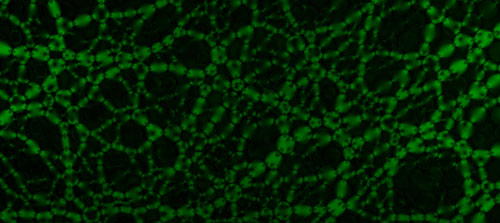Ever wonder why sand can both run through an hourglass like a liquid and be solid enough to support buildings? It’s because granular materials – like sand or dirt – can change their behavior, or state. Researchers from North Carolina State University have found that the forces individual grains exert on one another are what most affect that transition.
Physicists have explored the changing behavior of granular materials by comparing it to what happens in thermodynamic systems. In a thermodynamic system, you can change the state of a material – like water – from a liquid to a gas by adding energy (heat) to the system. One of the most fundamental and important observations about temperature, however, is that it has the ability to equilibrate: a hot cup of tea eventually cools to match the temperature of the room.
Physicists thought they could use thermodynamics’ underlying ideas to explain the changes in granular materials, but didn’t know whether granular materials had properties which might equilibrate in a similar way. In other words, instead of temperature being the change agent in a granular system, it might be a property related to the amount of free space, or the forces on the particles. But no one had really tested which of the two might exhibit this property of equilibration.

Two-dimensional granular material composed of photo-elastic disks. Regions of high stress appear bright. Researchers can determine contact forces by examining brightness patterns. Image credit: North Carolina State University
NC State physicist Karen Daniels and former graduate student James Puckett devised a way to do just that. Puckett used two different types of plastic “granules” with different properties that floated atop a layer of air on a small table. Puckett and Daniels wanted to see what would bring the two types of particles into equilibrium with one another. In order to make their measurements, they used a plastic material that indicated a change in force by a change in brightness.
First, they measured compactivity, which describes the number of ways particles can arrange themselves inside a given space, or volume, by reducing the physical space around the granules, but the two types of particles failed to achieve equilibrium. When they measured the ways that the forces between the particles could rearrange, they saw the equilibrium they were looking for.
Their findings appear in Physical Review Letters.
“Physicists often have ideas that are theoretically elegant, such as the idea that there might be new temperature-like variables to be discovered, and then it’s exciting to go into the lab and see how well these ideas work in practice,” says Daniels. “In this case, we found it is possible to take the temperature of a granular system and find out more about what makes it change its state. The ‘thermometer’ for this temperature is actually the particles themselves.”
*Source: North Carolina State University
